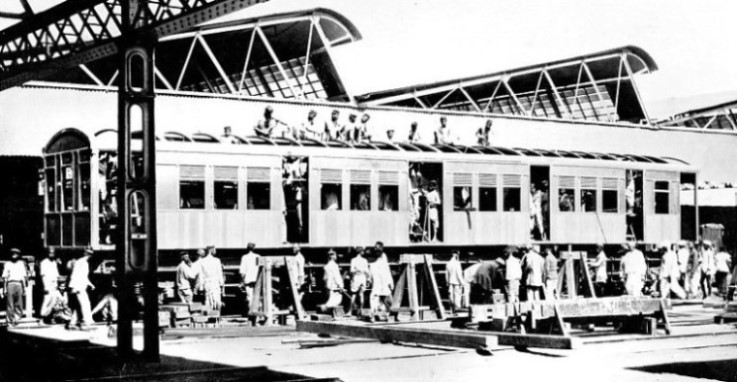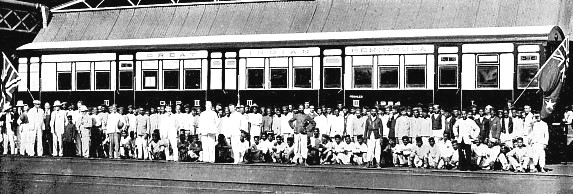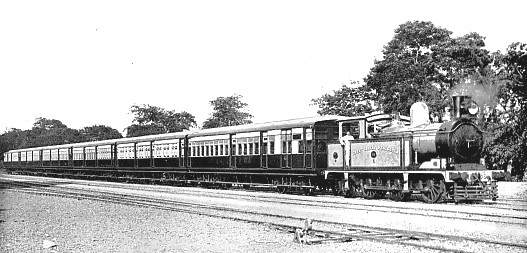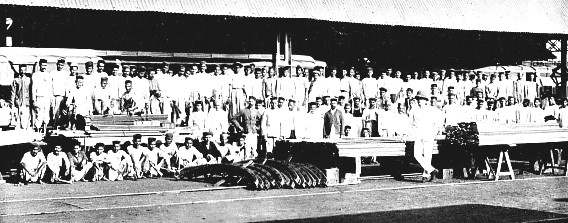
© Railway Wonders of the World 2024 | Contents | Site Map | Contact Us | Cookie Policy


Building a Railway Carriage Against Time
An interesting record achieved upon the Great Indian Peninsula Railway in building a carriage in forty working hours
WORKMEN AND MATERIALS assembled on the Monday morning.
NOW and again a railway company, or a private organisation supplying necessaries for the railway, indulges in what may be described as a strenuous race against the clock in the performance of some particular undertaking. We have had a locomotive built in ten hours, a timber trestle 1 miles long run up in six weeks, and a steel bridge erected in a few hours or days, according to its dimensions. Such record-
But occasionally the comparatively unskilled workmen, to whom the word “hustle” is unknown, and who, as a rule, cannot be induced to let himself go, is able to set up a performance which, if completed by highly-
One day the operating department of this big railway found that it wanted urgently a standard 62-

THE RESULT OF THE SECOND DAY’S WORK.
The superintendent was merely given the general indication of the type of vehicle required, and its projected service. The drawings first had to be prepared, and these were carried out at express speed. The requisition called for a two four-
While the drawings were under way, the orders for the necessary material were handed out to the different departments. The whole of the woodwork was prepared from the raw material, some 600 cubic feet of timber having to be cut, planed, and machined, to furnish 92 windows and shutters respectively, 19 doors, in addition to compartment partitions, roof-
By the end of 26 days everything was ready for actual erection. Every detail required was marshalled in the erecting yard, and all was left ready on the Saturday for commencing the task of building against time at 8.30 on the following Monday morning. The scope of the enterprise was explained to the workmen, and they entered into the spirit of the test of their skill and organisation with keen zest. No overtime whatever was to be permitted; the men were to labour only during the usual eight-
At 8 o’clock on the Monday morning the men were assembled in the yard to receive their orders. There were 88 in all, under 8 foremen or “maistries”, with Mr. Bell himself supervising the undertaking in general. When the half-

THE COACH AND THE WORKMEN who built it in 40 working hours.
The pace put up on the first day was maintained during the Tuesday. While gangs were hard at work on the actual body and framing, other bodies of workmen were engaged upon numerous other details. A crew of 66 carpenters, under 3 foremen, set about the construction of the doors, windows, shutters, seats, etc, while 9 other men concentrated their energies upon the upholstery, blinds and other internal embellishments. By the end of the day the underframe was in position, the whole of the framework of the superstructure, including the roof, was completed, and the ends and sides had been placed.
During the Wednesday the whole of the woodwork was finished, while the steelwork was likewise completed. Hard on the heels of the carpenters came the painters, and during the Wednesday afternoon the vehicle received its first, or priming, coat of paint.
On the morning of the fourth day the coach received its final coat of paint, lettering, numbering and varnish. The electrical staff also completed the electric-
Thus the coach had been put through within a month of the receipt of the order by Mr. Bell. Actual erection had occupied only 40 hours. Although the work was “rushed”, there was no undue speeding-

A CORRIDOR TRAIN ON THE SUBURBAN SERVICE of the Great Indian Peninsula Railway.
You can read more on “Modern Transport in India”, and “The Railway Invasion of India -
